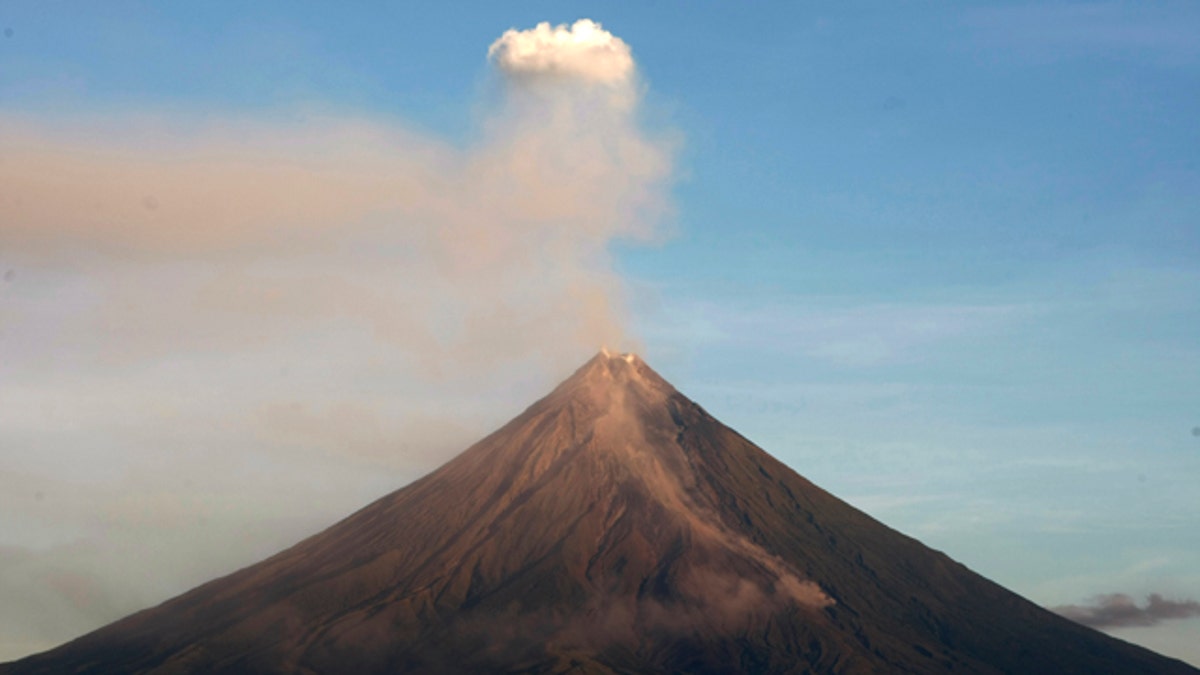
Mayon volcano spews ash anew in another "ash explosion" as viewed in Legazpi city, Albay province, about 500 kilometers south of Manila. Security forces will forcibly evacuate thousands of residents reluctant to leave their farms around the slopes of the country's most active volcano despite fears of a major eruption. (AP Photo/Bullit Marquez)
MANILA — Philippine troops evacuated about 12,000 more people from villages at the base of the country's most active volcano as it showed signs of a major eruption, officials said on Friday.
A state of calamity has been declared in eight cities and towns around Mayon Volcano, famed for its near-perfect cone shape in a coconut-growing region of the central Philippines, and a 4-5 mile no-go zone has been imposed.
A 24-hour curfew was also imposed to stop people from going back to their homes and farms as Mayon showed signs of a violent eruption in three days to a week, July Sabit, a vulcanologist, told reporters.
Sabit said 246 volcanic tremors had been recorded during the last 24 hours. Mayon continued to spew ash and steam, and boiling mud and rocks flowed from the crater summit 2 miles down its southeastern slope.
SLIDESHOW: Mayon Volcano Nears Eruption
"Since an increasing trend is noticeable at present, the possibility of hazardous volcanic eruption is high," the state's chief vulcanologist Renato Solidum, told reporters.
He said two major ash and steam explosions were recorded on Friday, one shooting up as much as a mile and a quarter. Officials raised Mayon's alert to level 3 on Monday, meaning sudden hazardous explosions were likely.
"Alert level 3 remained hoisted over Mayon Volcano but the parameters are already at the ceiling, which means alert level 4 might be declared any time," Joey Salceda, provincial governor, told a television interview on Friday.
Level 4 means an eruption is imminent while Level 5 means an eruption is in progress.
More than 35,00 people have already been evacuated from around Mayon's danger zones, Salceda said.
The Philippines lies on the "Ring of Fire," a belt of volcanoes circling the Pacific Ocean that is also prone to earthquakes. Mayon is the most active of 22 volcanoes in the country, having erupted more than 50 times in the last four centuries. The most destructive eruption came in February 1841 when lava flows buried a town and killed 1,200 people.
